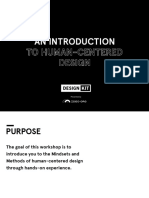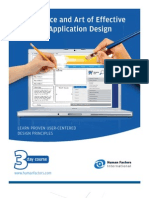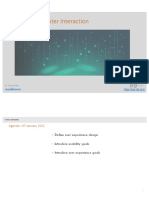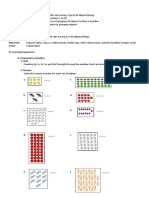PRESENTATION SEVEN
Professor Croichy
TOPICS:
• Role of a UX Designer | UX Workflow
• Human-Centered Design
• Understanding CSS
ROLE OF A UX DESIGNER |
UX WORKFLOW
ROLE OF A UX DESIGNER | UX WORKFLOW
A UX designer is concerned with the entire process of acquiring and
integrating a product, including aspects of branding, design, usability and
function.They conduct user research, testing, develop both wireframes and task
flows based on user needs and wants.
CHARACTERISTICS AND PRACTICES OF A
UX DESIGNER
1. User-focused
2. Multidisciplinary
3. Prototyping
4. Creative Thinking
5. Emotional Design
CHARACTERISTICS AND PRACTICES OF A
UX DESIGNER
1.Adaptability - The ability to adapt has a great importance for
designers, especially ux designers.
2.Communication -There comes a point in every designers career
where their role is less and less about Photoshop, and more about
communication and persuasion.
3. Empathy - Empathy in design is a user-centered design approach
that pays attention to the user's feelings toward a product.
4.Problem solving - Deciding what steps or details of how to create
artwork is in part problem-solving, and it allows you to create a design
or illustration as you do this.
UX WORKFLOW – SIX STAGES
1. Understanding & Research
2. Build User Persona
3. Create User Stories/Scenario Map/Sitemap
4. Start creating Wireframes and Interaction Prototypes
5. UI, visual design and deliver
6. Metrics Analysis
HUMAN-
CENTERED
DESIGN
HUMAN-CENTERED DESIGN
Human-centered design is an approach to problem solving, commonly used in
design and management frameworks that develops solutions to problems by
involving the human perspective in all steps of the problem-solving process.
HUMAN-CENTERED DESIGN IS A WAY OF APPROACHING
YOUR DESIGN PRACTICE THAT SPECIFICALLY ADDRESSES
THE NEEDS OF YOUR USER BASE.
THREE STAGES OF HUMAN-CENTERED DESIGN
1. Inspiration
2. Ideation
3. Implementation
THREE STAGES OF HUMAN-CENTERED
DESIGN
Inspiration - The inspiration phase is all about dropping any preconceived
notions you might have about your users and, instead, learning their needs and
challenges from them through conversation and observation.
Ideation - This is when you start actually making things (basic sketches, lists,
or small-scale models) — this phase is about visualizing, brainstorming, and
discussing all the potential solutions.
Implementation - This contains the tail end of the pre-production phase,
where a prototype is put together for your users to try out, as well as the
actual production of the object (or coding, for web and app-based projects).
UNDERSTANDING CSS
WHAT IS CSS?
It is a style sheet language used for describing the presentation
of a document written in a markup language like HTML. CSS is a
cornerstone technology of the World Wide Web, alongside
HTML and JavaScript.
WHY IS CSS IMPORTANT FOR WEB
DESIGNERS?
CSS is important because it allows web designers, developer, bloggers, and so
forth to make our websites unique and attractive.
CSS allows us to separate the presentation from the structure (HTML) into
different files.
While HTML focuses on the content and structure of a website, CSS is
concerned with elements of presentation such as layout, font and color.
CSS is also used to optimize pages for responsive design and create other
advanced visuals such as hover effects.























































































